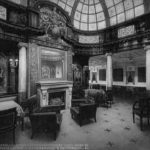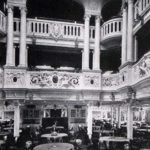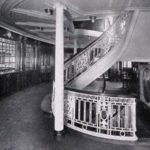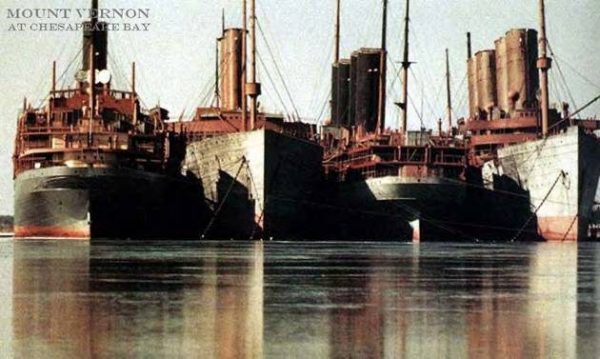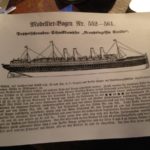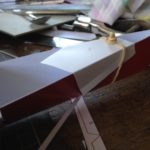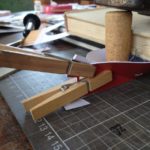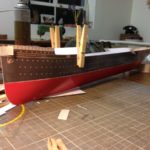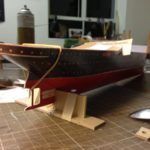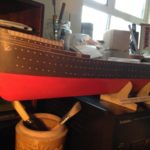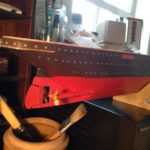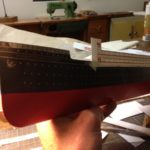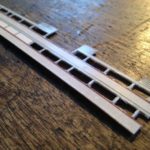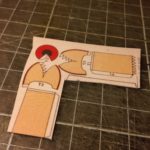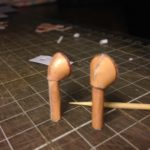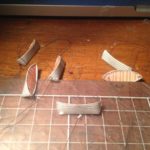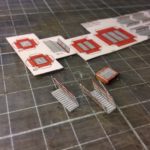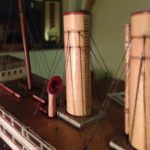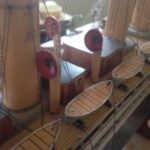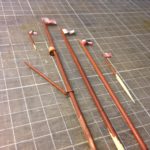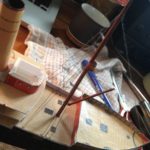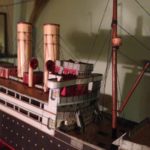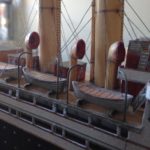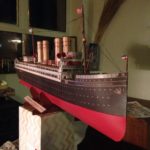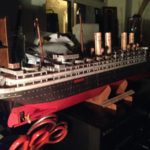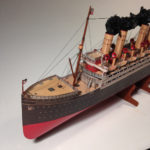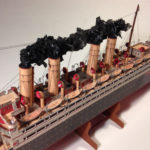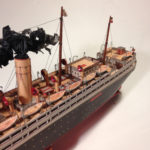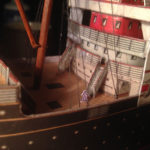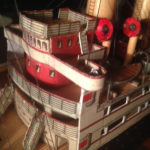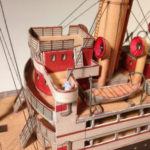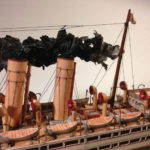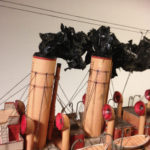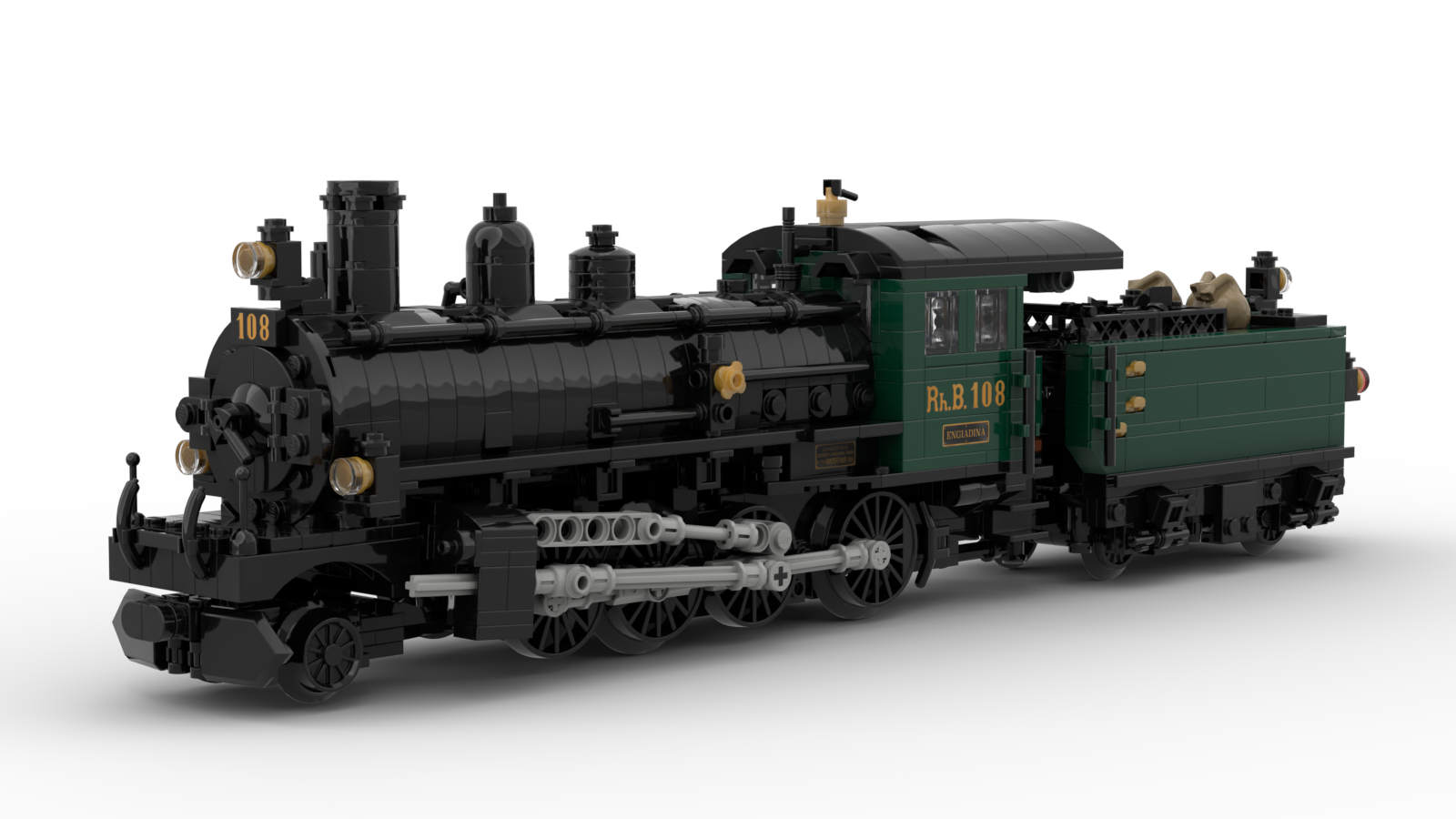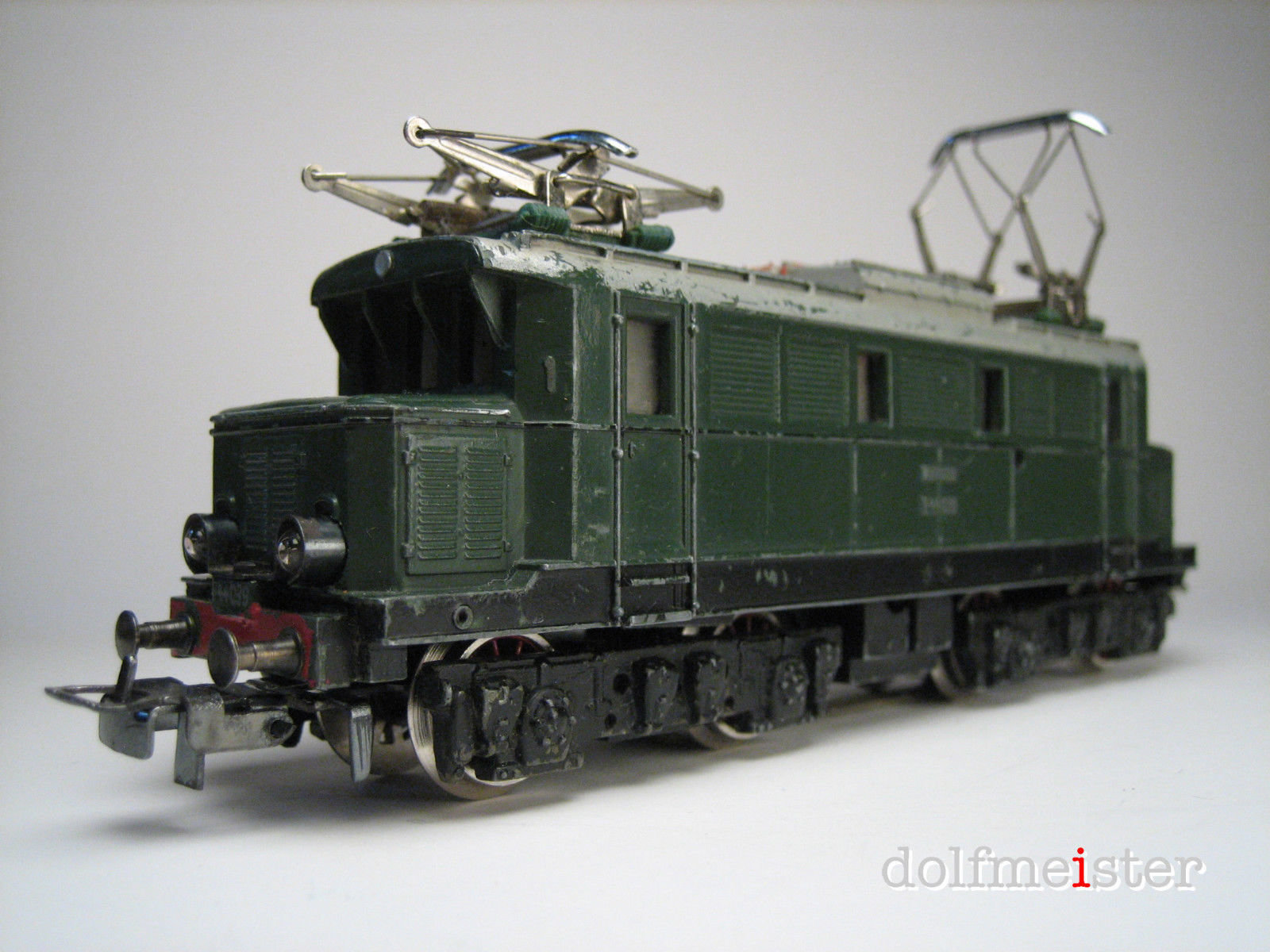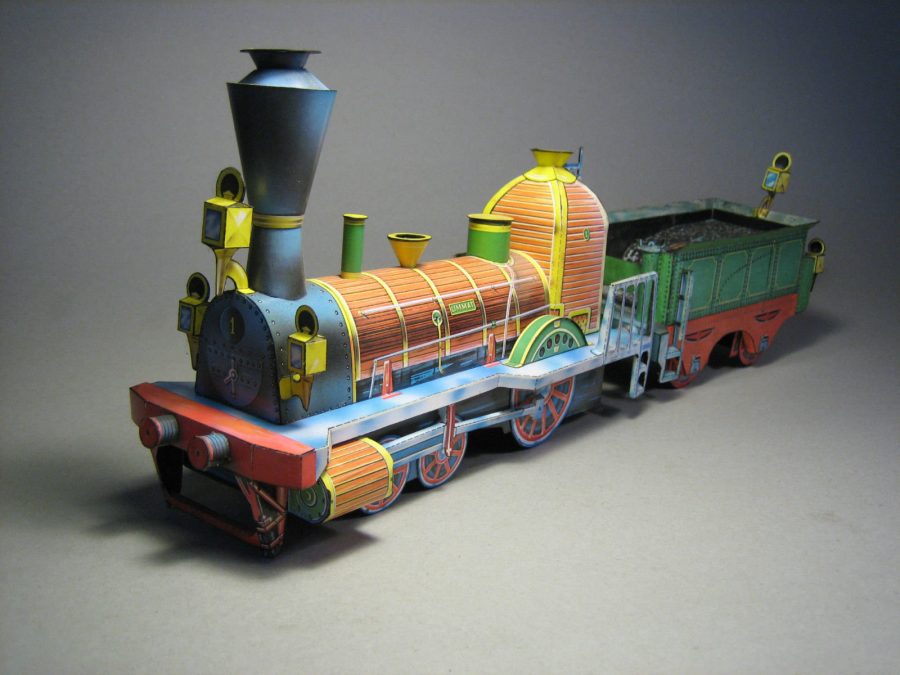SS ‘Kronprinzessin Cecilie’
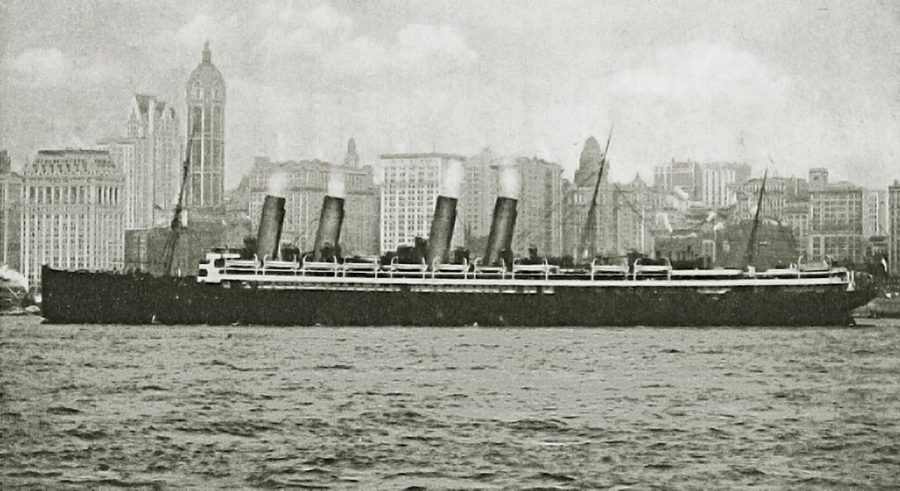
About the ship…
SS ‘Kronprinzessin Cecilie’ was a German transatlantic liner, the last of four ‘Kaiser’ Class liners built for Norddeutscher Lloyd. She was launched in 1906 and entered service the following year. Measuring 215.29m long and 22m wide, she could accommodate 1,741 passengers in three classes.
First class public rooms aboard SS ‘Kronprinzessin Cecilie’
The ship was interned at New York at the outbreak of WWI and requisitioned by the US Navy in 1917. Renamed USS ‘Mount Vernon’ and converted to a troop carrier, she survived the war, only to be laid up alongside her sisters. When WWII came along, the once proud liners were deemed too old and decrepit to reactivate and they were scrapped.
USS ‘Mount Vernon’ (far right) laid up at Chesapeake Bay
Jakob Ferdinand Schreiber Verlag, of Esslingen, Germany, produced a paper model kit of this liner in 1910. Its original scale was 1:200, producing an impressive model 1,075mm in length! Long out of pint, somebody took the time to scan its pages at high resolution for us to enjoy. The files can be obtained here. I had kept these files on my hard disk for many years and have now finally made it up. Since suitable paper was available only in A4 format, the scale chosen was 1:400, or half the original size.
- A new project begins with instructions…
- Assembling the keel at the bow…
- …and at he stern.
- Adding the hull sides…
- …and shaping the fantail.
- The finished hull viewed from from the bow…
- …and the stern.
- Trying the superstructure on for size…
- … and cutting the 144 windows out.
- Shaping the 18 cowl vents, each made of three parts…
- … is an exceedingly fiddly task!
- The same applies to the life boats…
- …and the companionways.
- The elegant funnels being installed…
- …and rigged.
- The first cowl vents…
- …and lifeboats on the deck.
- Masts and flag poles made out of kebab skewers.
- The American flag showing the destination is flying on the foremast…
- …high above the cargo derrick and crow’s nest.
- The bridge completes the forward superstructure
- The life boat davits were shaped out of thin wire using a jig.
- Save for a hand full of detail parts…
- …she is complete!
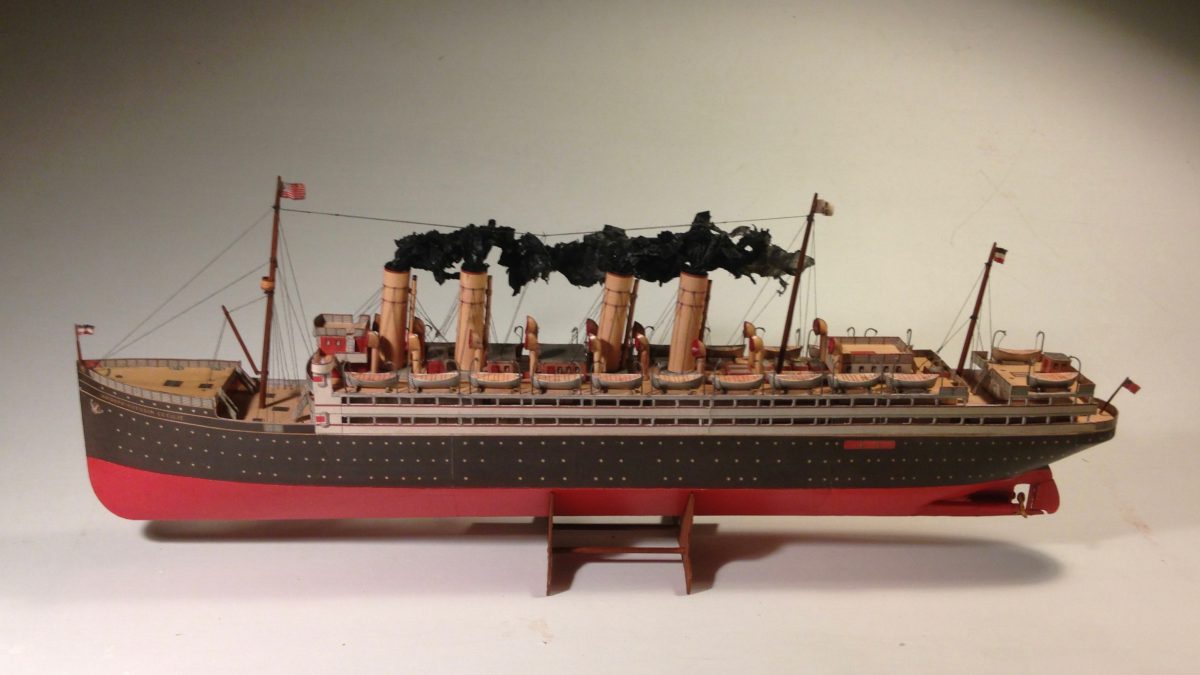
The model took an estimated 150 hours to complete. Of the several hundred parts that wanted cutting out, shaping and putting together, none were lost or damaged beyond repair. The overall appearance is reminiscent of tinplate toy ocean liners of the day and captures the essence of the original quite well.

